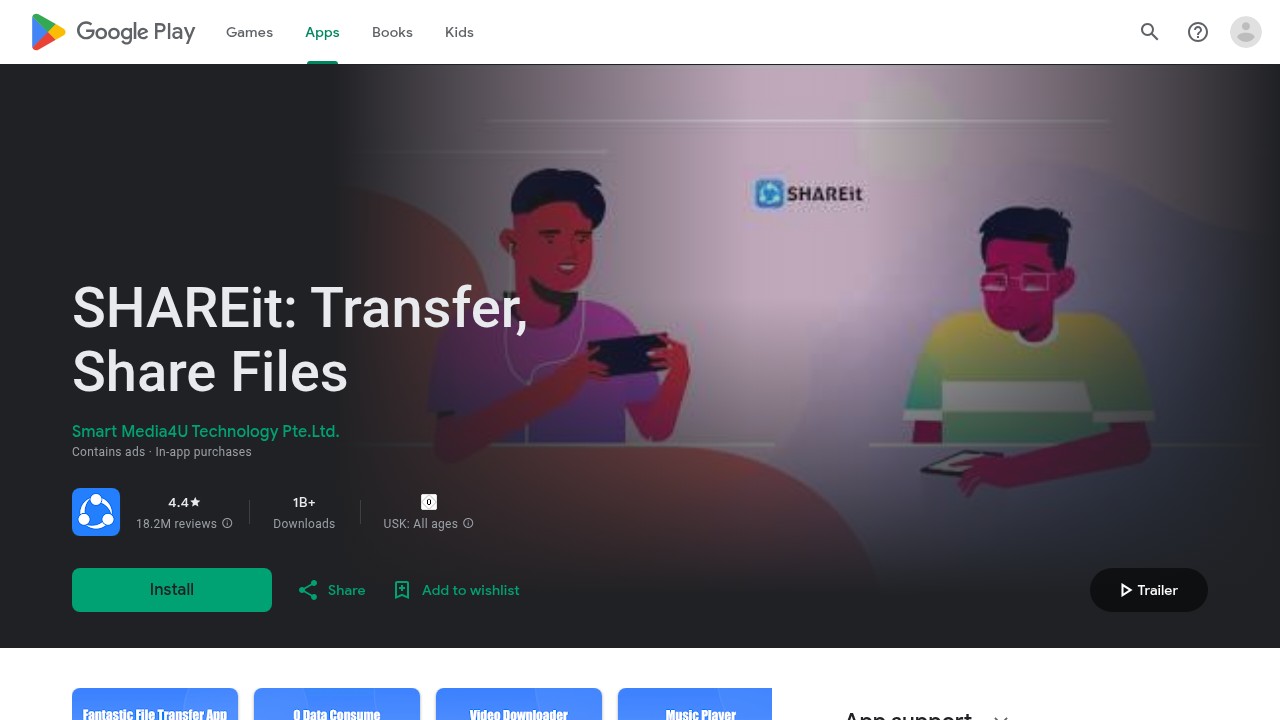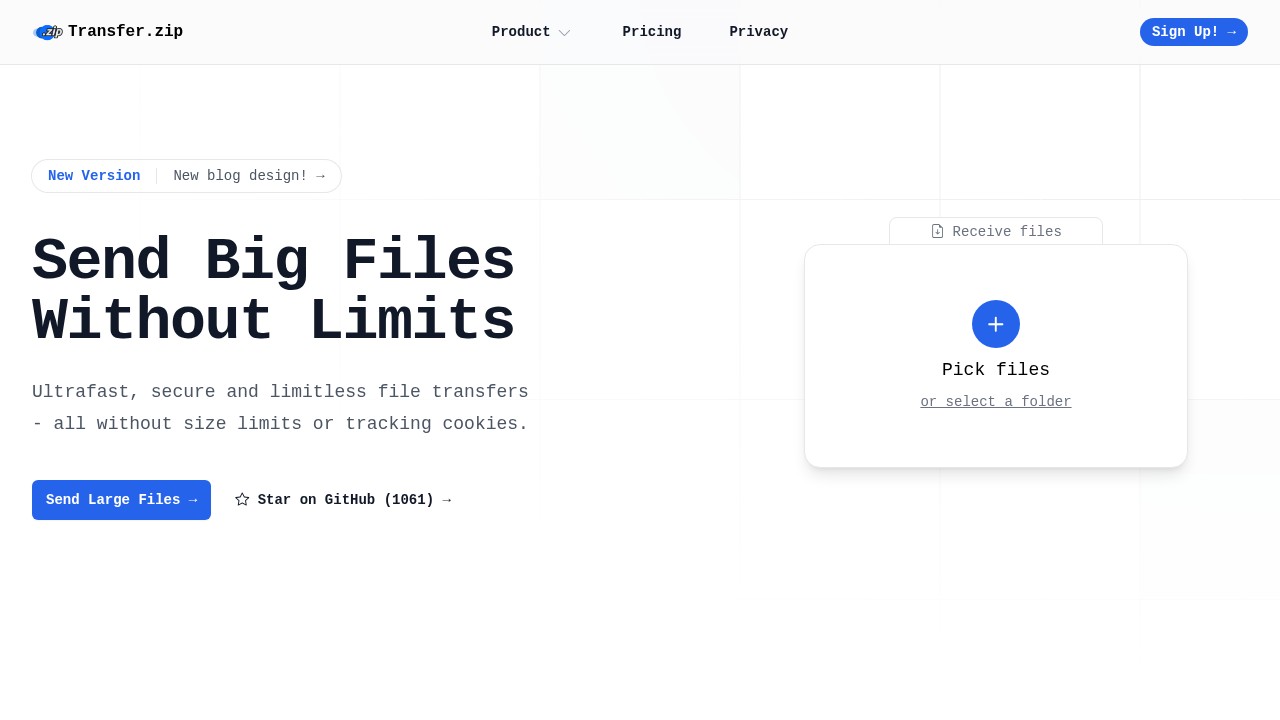Fast File Sharing Apps: What Really Matters in 2025
If you try to send big files online, you often hit limits or wait for slow uploads. People want file sharing to be quick, private, not stuffed with ads, and simple to use. There are many options and every service looks good on the surface. Actually finding the fastest file sharing app that works for your needs is not always easy.
Let’s look at what makes a file sharing app really fast, compare popular choices, and see where newer tools like Transfer.zip help.
Why People Want Fast File Sharing
- Saves Time: Waiting for hours to send a video or a large folder just feels bad. Fast apps mean you work quicker.
- Work & Study: Lots of jobs and projects need to send big files regularly.
- Privacy: With so much data moving, people care more about who sees what they send.
- No Annoyances: Nobody wants to deal with constant ads, fake alerts, or bad interfaces while just trying to share a file.
The Usual Big Names: Quick Comparison
Based on PCMag’s file sharing roundup, here are some of the common solutions people use in 2025 - along with their pros and cons:
1. Google Drive
- Strengths: Good if you use Gmail or Google Docs. Handy for light work or school. Free for small files (up to 15GB).
- Weaknesses: Has file size limits. Shared files use your personal storage. Not always very fast for very large files.
2. Dropbox
- Strengths: Familiar for many users. Handy desktop and mobile apps.
- Weaknesses: Free storage is very limited (only 2GB). Ads and upsell messages. File size cap for the basic plan.
3. Microsoft OneDrive
- Strengths: Integrates well with Windows and Office. Good speeds for Windows users.
- Weaknesses: Max file size is 250GB, but only on higher plans. Not privacy-focused.
4. SHAREit 
- Strengths: Super fast for phone-to-phone transfers, especially offline. Can send many file types. No need for internet if devices are close.
- Weaknesses: Packed with ads in app and notifications. Not always secure for sensitive files. Some users report annoying popups and privacy issues.
How Transfer.zip Compares to the Rest
A lot of file sharing tools look the same at first, but Transfer.zip (see Transfer.zip) stands out if you care about privacy, speed, and truly big files.
Here’s How Transfer.zip Solves Real Problems
- No File Size Limits: Send any size - even files over 100GB or up to 1TB and beyond. This is rare; Google Drive and Dropbox cap you at much smaller limits unless on expensive business plans.
- Privacy by Default: No tracking cookies or selling user data. Files are encrypted with AES-256, a standard even governments trust.
- Peer-to-Peer Speed: With Quick Share, files don’t hit a third-party server at all. You send straight from your device to your friend’s, fast as your connection allows.
- Simple Interface: No popups or forced boxes. You just upload, get a link, or enter emails, and you are done.
- Long File Retention: Pro users can store files up to 365 days; even free users can keep Quick Shares alive as long as the browser is open.
- Flexible Links: You can track if files are opened or downloaded and set links to expire on your schedule.
Unique Tools:
- Browser zip/unzip and image conversion, all handled without uploading your private data elsewhere.
- Anyone can send files to you - even if they do not have an account.
Read more on their site here: Transfer.zip
When to Use Which Tool?
| App | Quickest For | Max File Size | Annoyances | Main Privacy Level |
|---|---|---|---|---|
| Transfer.zip | Super large files, privacy | Unlimited (with Quick Share) | None | End-to-end encrypted, no tracking |
| SHAREit | Local quick share (phone-to-phone) | Unlimited (local) | Many ads | Limited |
| Google Drive | Google ecosystem | 15GB (free) | Google account needed | Standard, some sharing concerns |
| Dropbox | Business, personal use | 2GB (free) | Upsells | Standard |
| OneDrive | Office/Windows | 250GB (paid only) | Some popups | Standard |
Main Takeaways When Searching for Fast File Sharing
- For massive files or for work: Most free tools will let you down here with size or speed caps. Transfer.zip removes this size cap entirely.
- If sharing over local Wi-Fi: SHAREit, AirDrop (Apple devices) or Nearby Share (Android) are quickest.
- If privacy & speed matter: Transfer.zip’s Quick Share mode gives private, peer-to-peer sharing without middlemen.
- If you just need handy integrated storage: Google Drive or OneDrive can fit, but you won’t get max speed or privacy.
- If you hate interruptions: Some apps bring lots of ads or popups; Transfer.zip and Dropbox are much cleaner.
FAQ: Fast File Sharing Basics
What makes a file sharing app “fast”? A fast app moves files quickly over your network, uploads or downloads large files with no lag, and doesn’t need many steps to get started.
Can I send hundreds of gigabytes at once? Most apps limit file size, often at 2GB or 15GB for free users. Look for services with no size cap or peer-to-peer transfers.
Are “free” file sharing apps private? Not always. Some free apps track users or serve lots of ads. Check privacy policies and see what data is collected.
Does it matter what device I use for sharing? Yes, some apps work best on mobile (like SHAREit), others in browser (Transfer.zip) or inside Windows (OneDrive).
Why do some links expire or get deleted? To save storage costs, companies set expiry dates or file deletions. Find a service that lets you control how long files live.
Looking for a super fast, private file sharing solution? Apps like Transfer.zip are now solving size and privacy headaches, making big transfers easy without the usual pain points. It’s worth trying a few options to see what matches your sharing style best.
If you want more info, you can check out popular tech guides like PCMag’s full file sharing roundup to dive deeper.
